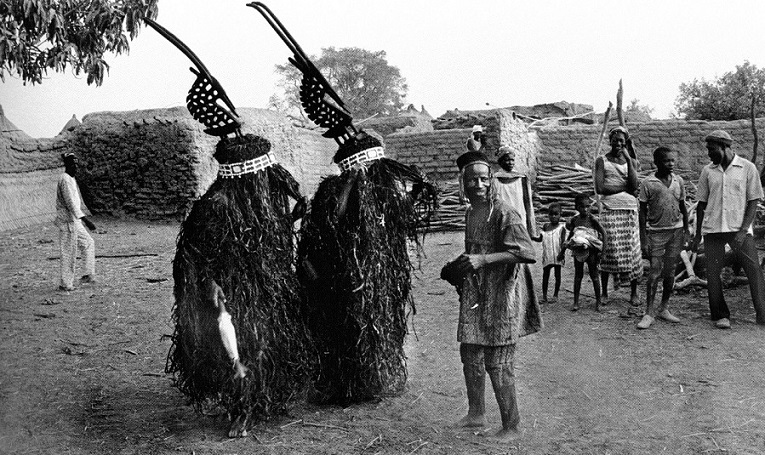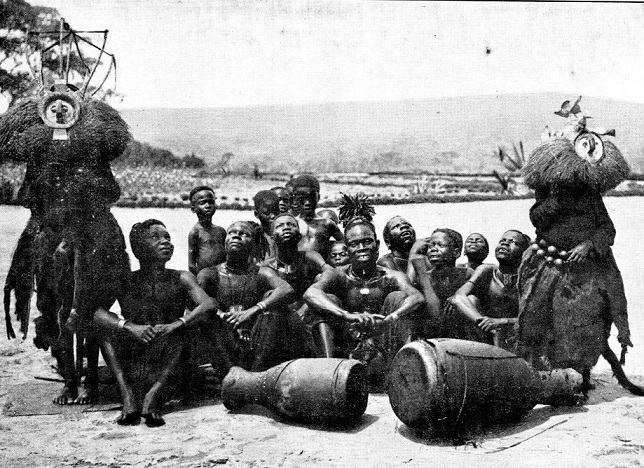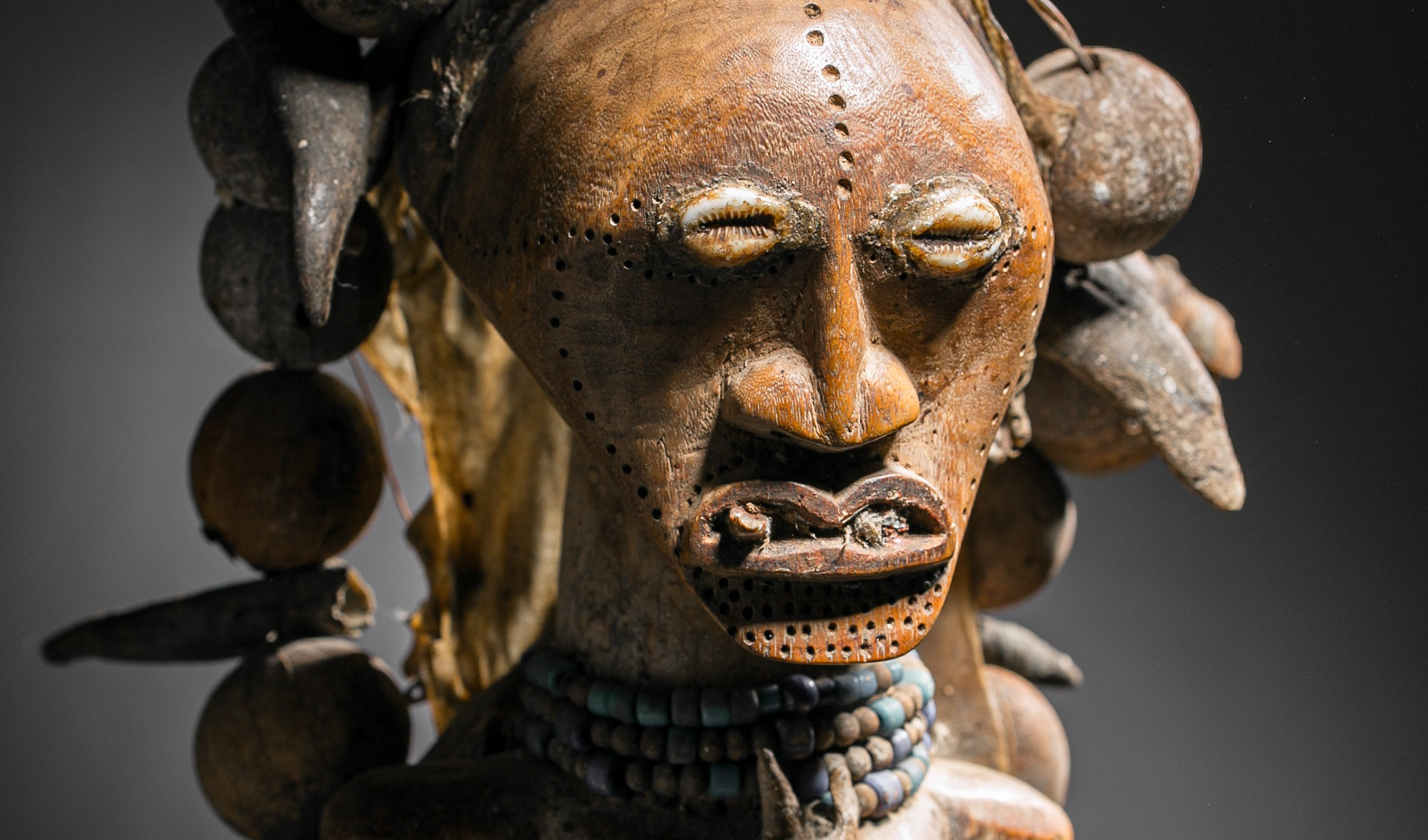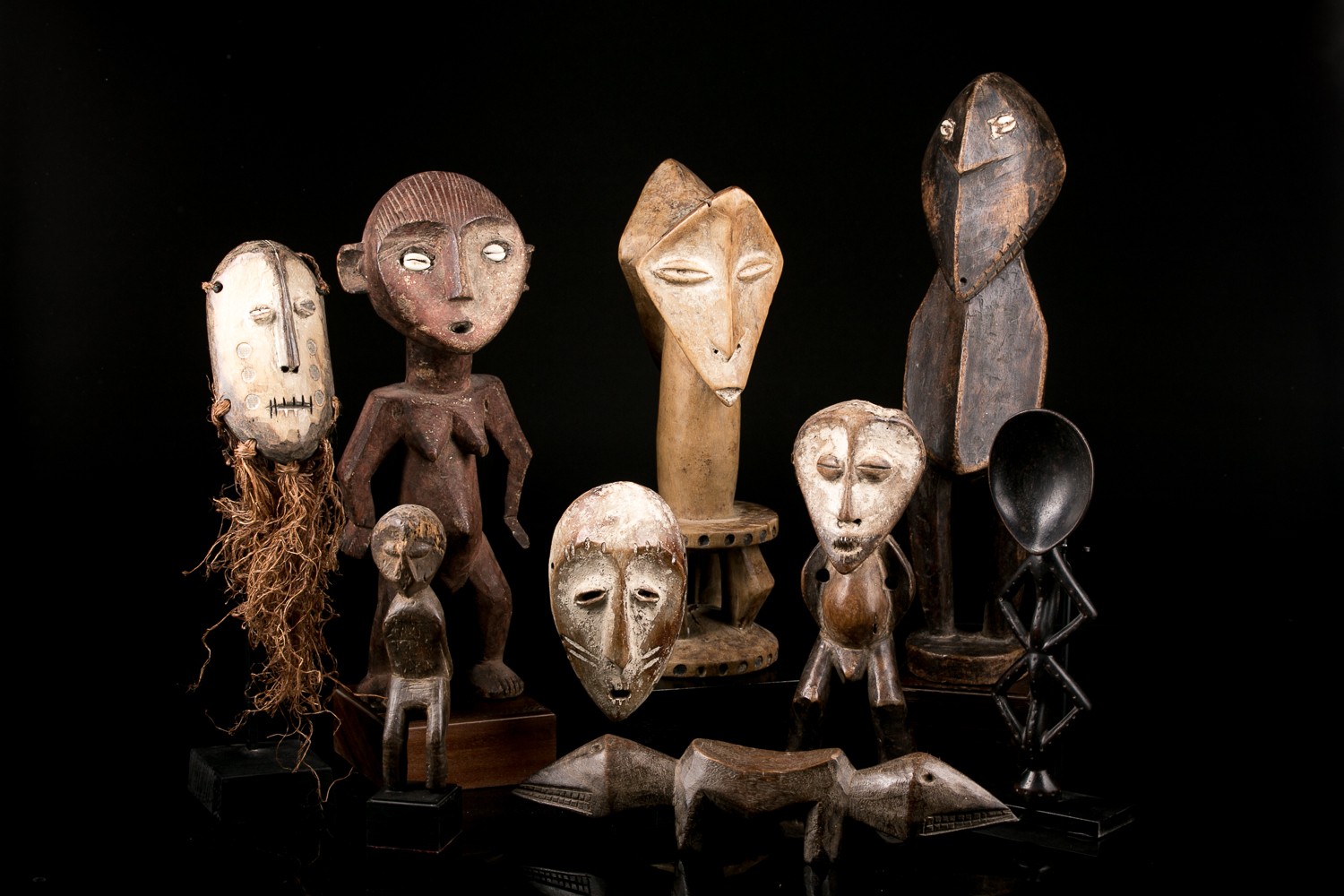The millennial existence of masks in Africa
Traditional masks are found on every continent and in many cultures. Among the peoples of Africa, Oceania and the Americas. Masks connect the world of the living to the supernatural.
In North Africa, in Algeria, the cave paintings of Tassil-n'Ajjer show that masks were already used thousands of years ago.
Today, many African cultures continue to use masks for the same reasons as their ancestors.
Some African masquerades are still performed in a traditional and original way. Others have been adapted to meet changing needs and new masks are being created to incorporate aspects of the contemporary world.
Reconstructing the origin of masquerades is often difficult, although oral traditions can provide useful information about the history of specific masks or rituals.

Who wore traditional masks in Africa and why?
Through the diversity of masks that our catalog offers, ranging from Mali to Angola via the Democratic Republic of Congo, Ivory Coast and Gabon, we examine the extent and expression of African traditions to which are linked the masks.
These are almost always controlled by men who sometimes play female characters.
Their use is often linked to closed or secret male associations, which use them to ensure the well-being of society as a whole and strengthen the power of men over women.
In many cases, regulations, inherited from ancestors, are transmitted through these closed societies. The rules are reinforced by the tangible presence of the supernatural world embodied in masks of the most varied shapes and colors. Masks can also entertain and bring justice, good fortune, enthusiasm and protection to the community.

So most masks act dynamically when they appear. They can walk solemnly, run, dance or perform acrobatic feats. Their dance moves can be precisely prescribed or improvised.
Human, animal or supernatural faces, they also use words through texts and songs.
Others speak in a secret language or make strange sounds that can only be understood by initiates.
Masks, dances and music in African art
Often, musical instruments accompany them: trumpets, flutes, lamellophones and drums produce sounds which can give a “voice” to the object. These voices play an important role in the characterization of the mask. The music that accompanies the masks can also invite specific individuals or the entire community to participate in the ritual by dancing or helping them achieve a trance state that brings them closer to the spirit world.
Traditional costumes and badges of power
For most ethnic groups in sub-Saharan Africa, the term “mask” refers not only to the element that covers the face, but also to the entire costume. Such costumes usually completely cover the body with the mask.
They are made in accordance with the character embodied by the mask. Bush spirits may be dressed in costumes made from natural fibers, while ancestor masks are usually worn with a fabric costume.
Amulets containing medicinal preparations and other protective devices such as feathers of specific birds, as well as teeth and fur of leopards or other animals, enhance the power of the mask. Many of them contain symbols of power, such as fly swatters, scepters or weapons.
Since masks are above the laws of ordinary men, they often carry signs of power reserved for chiefs, kings or warriors.
%20-%20Copie.jpg)
The headdress which conceals the wearer's face or head is most often made of wood. Other materials from which masks are made can be fabrics or fibers. Wooden headdresses are classified according to the way they are worn: crest masks rest on top of the head while helm masks cover the entire head.
Some masks are tilted over the forehead, while others cover the face entirely. Finally, large shoulder masks rest, as their name suggests, on the shoulders of the dancer.
.jpg)
In many cases, fabric or raffia fibers are attached to the edge of the mask, which often has holes drilled for this purpose.
In our regions, it is rare to find complete costumes in art collections. In many cases the costumes are partially or even completely redone for each performance of the masque, so that they appear fresh. They are often made of organic materials that disintegrate easily.
Sometimes the costume is deliberately destroyed at the end of the festival or initiation.
Frequently, materials other than the sculpted mask are removed when entering the Western art market in order to better align the piece with the sculptural aesthetic sought by collectors and enthusiasts of African tribal art.
African art has inspired some of Europe's greatest contemporary artists; It is therefore not surprising that traditional African masks have enjoyed such great success for decades. Whether we appreciate the refinement of the Tyi Wara crests of the Bamana, the archaism of the simple forms of the Kumu masks or the high stylization of the Kifwebe masks of the Songye, there is something for all tastes and sensibilities in African art.


 By Rédacteur
By Rédacteur

